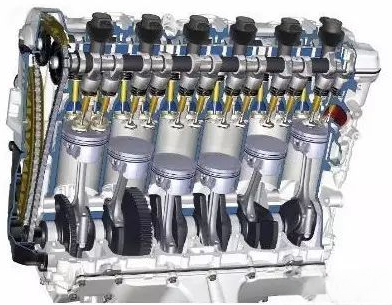
Engine White Smoke: What Do You Know?
As the power source of the machine, the engine plays a critical role. Ensuring its proper functioning is essential for prolonged usage, maintaining optimal performance, and achieving efficient diesel combustion. This not only improves economic efficiency but also contributes to environmental protection.
When a diesel engine is functioning properly, its exhaust should be colorless or light gray. However, certain malfunctions can cause the exhaust to emit white, blue, or black smoke. Today, let’s analyze the possible causes of white smoke emissions from the engine.
High Water Content in Diesel
When the diesel quality is poor or the fuel-water separator fails, the diesel entering the engine often contains a certain amount of water. This water mixes unevenly with the diesel after being injected into the cylinder, forming an inconsistent fuel-air mixture. During cylinder compression and combustion, this results in the production of a large amount of unburned hydrocarbons and water vapor, causing the exhaust to appear white.
 Fuel-Water Separator
Fuel-Water Separator
The solution for white smoke caused by this issue is to use high-quality diesel and an effective fuel-water separator. Before starting the engine each morning, check the fuel-water separator and promptly drain any accumulated water.
Fuel Injector Malfunction
Under normal engine operation, fuel is atomized and injected into the cylinder. However, when the fuel injector malfunctions, the fuel may enter the cylinder in droplet form. During the compression process, the fuel-air mixture becomes uneven, leading to incomplete combustion during the power stroke. This results in exhaust containing a significant amount of unburned hydrocarbons and water vapor.
 Fuel Injector Nozzle
Fuel Injector Nozzle
In such cases, it is necessary to identify which cylinder's fuel injector nozzle is malfunctioning. This can be done using the cylinder-by-cylinder shutdown method to isolate the faulty injector nozzle. Once identified, replace the defective nozzle promptly.
Individual Cylinder Misfire
When a cylinder is not functioning, its fuel injector still sprays fuel. The fuel-air mixture in this cylinder, after being compressed and heated, may turn into fuel vapor, resulting in white smoke during exhaust. This condition is often accompanied by a decrease in engine power and reduced performance.
 Engine Cross-Section Diagram
Engine Cross-Section Diagram
To troubleshoot this type of issue, the cylinder-by-cylinder shutdown method can also be used. This helps identify which cylinder or cylinders are not firing, allowing for further investigation into the causes of the misfire.
Coolant Entering the Cylinder
When coolant enters the cylinder, it can also cause white smoke in the exhaust. The principle is similar to excessive water content in fuel. Coolant may enter the cylinder due to a cracked cylinder liner or a damaged cylinder head gasket. Once exposed to high temperatures and pressures within the cylinder, the coolant turns into white steam during the exhaust process.
To diagnose this issue, check if the engine oil level has increased, which could indicate coolant mixing with the oil. If confirmed, the engine needs to be inspected and repaired. Replace the damaged cylinder liner or head gasket to resolve the issue.
Improper Fuel Injection Timing
If the fuel injection timing angle is too small, the fuel injector injects insufficient fuel into the cylinder before the piston reaches the top dead center (TDC). This reduces the amount of pre-mixed air-fuel mixture, slows down the combustion process, and delays its completion, leading to the formation of water vapor and white smoke.
If the fuel injection occurs too late, some fuel may not burn and is expelled as diesel vapor, causing the exhaust to appear white.
To address white smoke caused by improper fuel injection timing, the fuel injection timing angle must be readjusted. This requires precise timing adjustments based on the camshaft gear markings.

Engine Timing System
Additionally, when the engine temperature is too low, white smoke may appear in the exhaust. This occurs because, at low temperatures, some diesel fuel fails to combust and exits as fuel vapor, creating white smoke.
To determine the components of the white smoke, you can hold an object close to the exhaust outlet and observe if water droplets appear. If water droplets are present, it indicates that water has entered the cylinder, possibly due to high water content in the diesel fuel or coolant leakage into the cylinder. If no water droplets are observed, the white smoke is likely composed of unburned hydrocarbons or diesel vapor.
In winter or cold conditions, some engines may emit white smoke immediately after starting. This is due to the engine being too cold, causing the fuel injected into the cylinder to remain unburned and exit as fuel vapor. However, this smoke usually disappears once the engine warms up and is considered normal.
Today’s article has covered the causes and troubleshooting methods for white smoke in engines. We hope this information is helpful, and we encourage you to share it with others!

Leave a comment